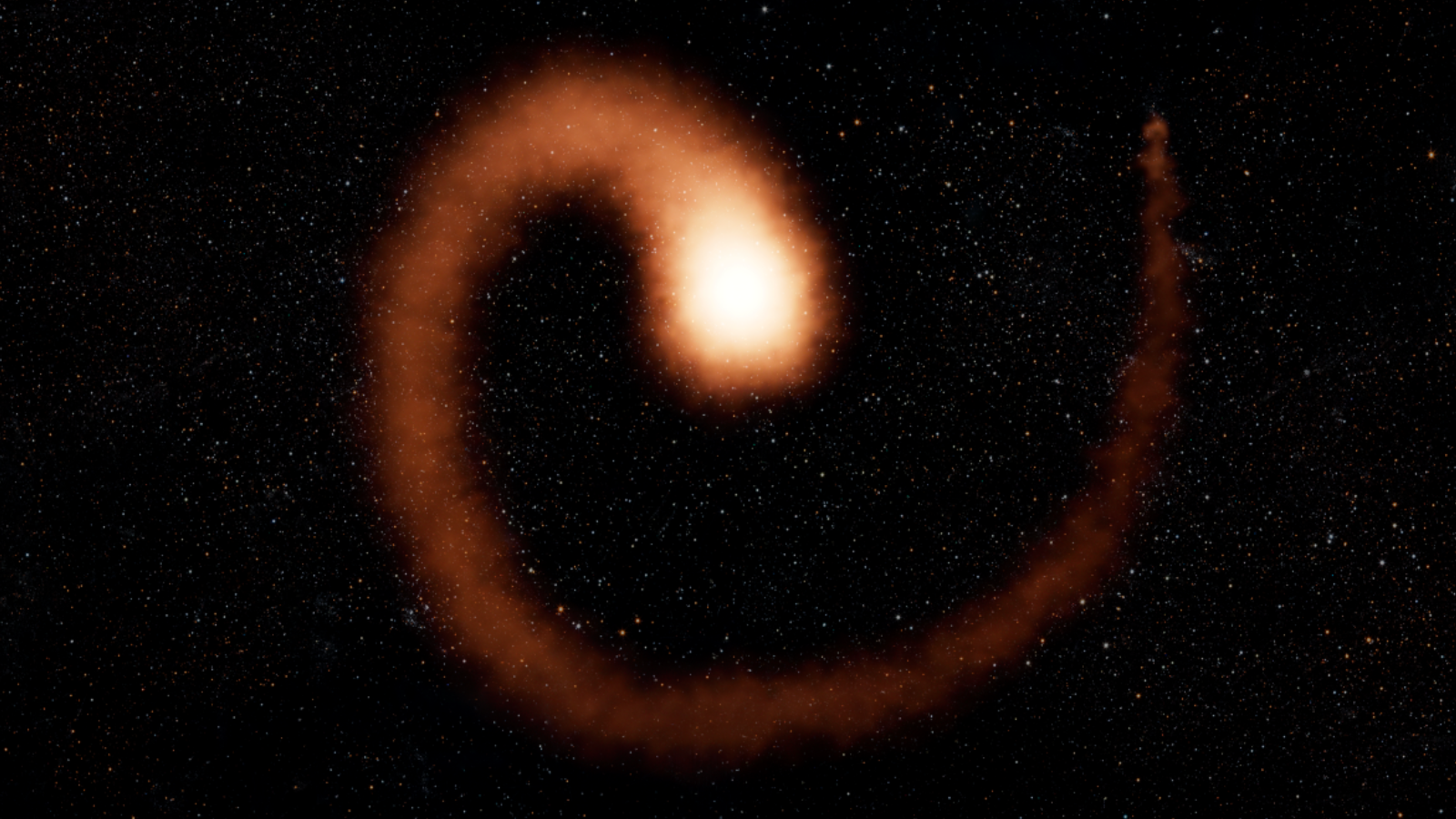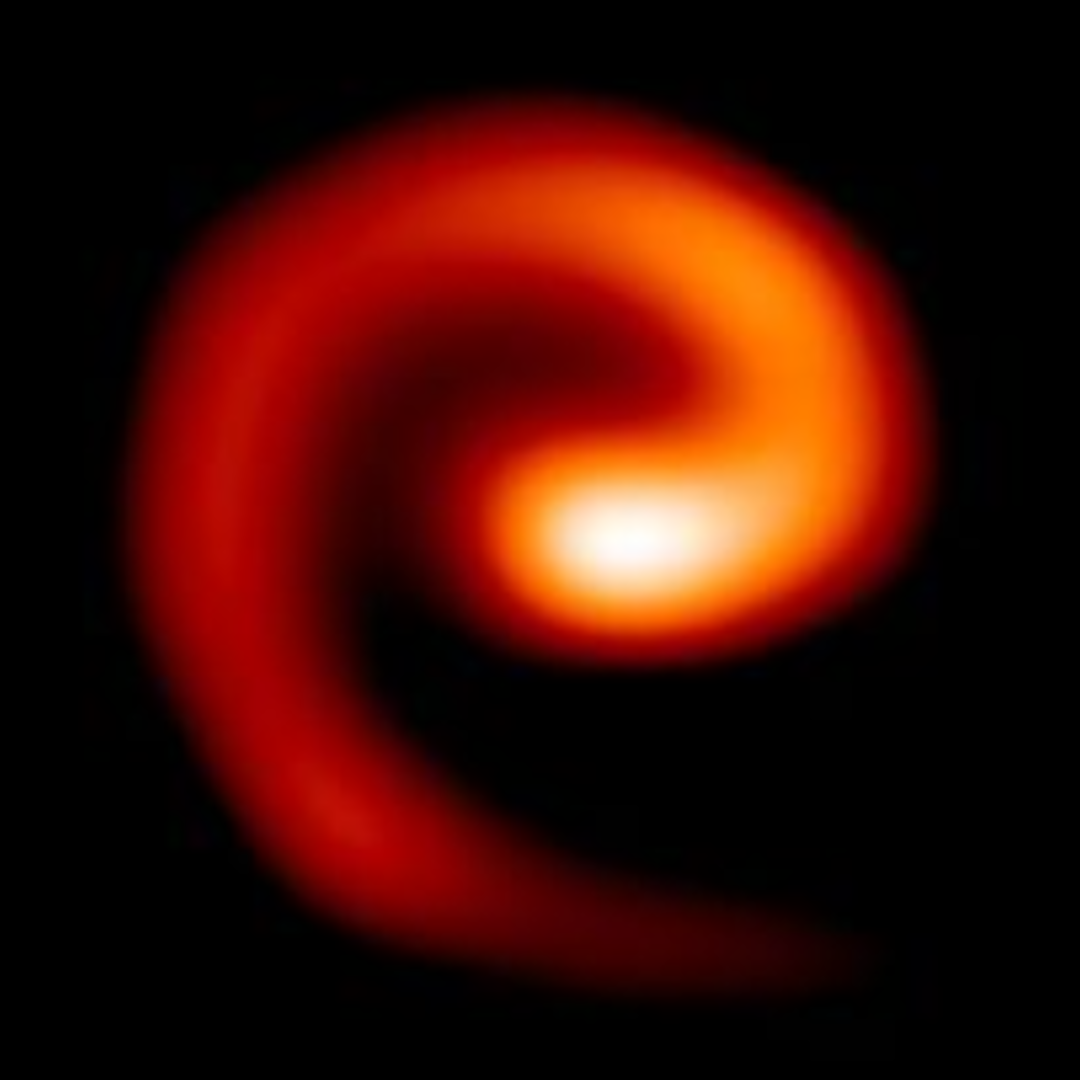
The "cosmic pinwheel" that astronomers feared could one day shower Earth with lethal gamma rays may not be as dangerous as once thought, a new study suggests.
At the heart of the pinwheel lies a pair of massive, hot stars locked in a binary orbit, located roughly 8,000 light-years from Earth in the Sagittarius constellation. Over the past two decades, observations have revealed that powerful plumes of gas emanating from both stars collide in the vast space between them, becoming entangled and creating a spiral stream of hot gas and dust in the sky.
Previous research also indicated that Earth looks down the axis of this system, known as Wolf-Rayet 104, raising concerns that our planet could be hit by intense gamma rays released from the stars' eventual explosive deaths. This led to the system earning the ominous nickname "Death Star."
A fresh analysis of observations conducted at the Keck Observatory in Hawai'i, which measured the velocities of the two massive stars, their orbits, and features in their spectra arising from the colliding winds, suggests that the stars' orbits are tilted 30 to 40 degrees away from Earth, making the threat far less likely than previously thought.
"When I started this project, I thought the main focus would be the colliding winds, and a face-on orbit was a given," study author Grant Hill of Keck Observatory said in a recent statement. "Instead, I found something very unexpected — the orbit is tilted at least 30 or 40 degrees out of the plane of the sky."

The findings have also presented an intriguing puzzle for astronomers regarding the misalignment between the observed face-on dust spiral and the tilted orbit of the stars.
This discrepancy could be pointing to more complex physics at play, such as hitherto unknown mechanisms that might tilt the dust spiral out of the orbital plane, according to the new study.
"This is such a great example of how with astronomy, we often begin a study, and the universe surprises us with mysteries we didn't expect," Hill said in the statement. "In the end, that is sometimes how we learn more about physics and the universe we live in.
"In this case, Wolf-Rayet 104 is not done surprising us yet!"
The team's research was published last November in the journal Monthly Notices of the Royal Astronomical Society.







